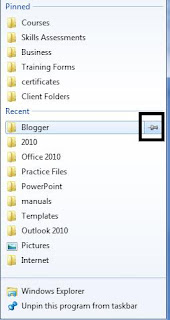Follow the steps below to Rip (copy) music from a CD to your Windows 7 computer:
Before beginning the steps below, make sure you are connected to the internet. When your computer is connected to the Internet, the Player attempts to retrieve media information about the tracks being ripped from an online database. The Player then adds the information to the files during ripping.
1. Click the Start button.
2. Type Windows Media Player in the search box.
3. Click Windows Media Player to open the program.
4. On the Menu bar, click Tools and then Options. (Note: if you don’t see the menu bar, it might be hidden. Click Organize > Layout > Show Menu bar to show the Menu bar.)
5. In the Options window, click the Rip Music tab.
6. Click the checkbox: “Rip CD automatically”
7. Click the checkbox: “Eject CD after ripping”
8. OPTIONAL: change the save location, file name, format, or audio quality on the Rip Music tab.
9. Click OK.
10. Insert a music CD to copy.
11. If Autoplay opens or another program opens to play the CD, click the X to close it. Windows Media player must remain open.
12. You should see the names of each music track and the program will automatically begin ripping each track. If you don’t want to copy every track, uncheck the box in front of the track.
13. When the entire CD has finished copying, the CD will automatically eject if you selected that option above.
14. To copy another music CD, just insert it and repeat steps 11 and 12 above.
15. Now you can remove the CD and locate the music you just ripped by clicking Music in the navigation pane on the left. Double-click to open a folder and then double-click a song title to play a song.
Notes:
If you do not see your music listed in Windows Media Player, click Start > My Music and locate the folder containing the music you ripped. Double-click on the folder to open it and then double-click the song title to play.
Windows XP also allows you to Rip a music CD but the instructions are slightly different.






